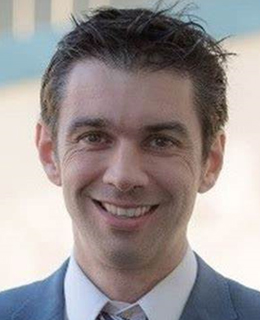ARC – Australian Laureate Fellow
Professor, School of Chemical Engineering
UNSW Sydney
Australia
Group Website: https://www.boyerlab.com/
Prof Cyrille Boyer is an Australian Laureate Fellow and Professor within the School of Chemical Engineering, deputy-Head of School, postgraduate course coordinator, and co-Director of Australian Centre for Nanomedicine at the University of New South Wales. He is an associate Editor of European Polymer Journal and a member of Advisory Board of Advanced Materials, ACS Infectious Diseases, ACS MacroLetters, Polymer Chemistry, Journal of Polymer Science, Macromolecular Rapid Communications, Macromolecular Chemistry and Physics, Cell Reports Physical Science, Giant, etc.
His research has been recognized by several fellowships, including Australian Postdoctoral Fellowship (ARC-APD), ARC Future Fellowship, and more recently, ARC Australian Laureate Fellowship (starting in 2023). He has received several prestigious research awards, including 2018 IUPAC-Polymer International Young Researcher award, 2018 Polymer Chemistry Lectureship, 2018 Award of Excellence in Chemical Engineering, 2016 ACS Biomacromolecules/Macromolecules Young Researcher Award, 2016 Journal of Polymer Science Innovation award, Le Fevre Memorial Prize awarded by Australian Academy of Science for chemistry, and 2015 Malcolm McIntosh Prize for Physical Science (one of the Prime Minister Prizes for Science). Since 2018, he has been listed as a Highly Cited Researcher in Chemistry or Cross-field by Clarivate and named as one of the Leaders in Polymers and Plastics in Australia by the Australian Newspaper.
Cyrille’s research interests mainly cover the preparation of functional macromolecules using photocatalysts, which find applications in various areas, including nanomedicine, advanced materials, and energy storage. In nanomedicine, his group designs new antimicrobial and anticancer polymers. More recently, he has implemented his photochemistry to 3D printing for the fabrication of 3D printed objects, enabling precise control over the nano- and macro-structure of 3D printed objects.
Representative Publications
[1] Zhang T., Wu Z., Ng G., Boyer C. Design of an Oxygen-Tolerant Photo-RAFT System for Protein-Polymer Conjugation Achieving High Bioactivity, Angew. Chem. Int. Ed. 62, e2023095 (2023).
[2] Lee K., Corrigan N., Boyer C. Polymerization Induced Microphase Separation for the Fabrication of Nanostructured Materials, Angew. Chem. Int. Ed. 62, e2023073 (2023).
[3] Wu Z., Zhang T., Shi X., Corrigan N., Ng G., Boyer C. Photo-RAFT Polymerization for Hydrogel Synthesis through Barriers and Development of Light-Regulated Healable Hydrogels under NIR Irradiation, Angew. Chem. Int. Ed. 62, e2023024 (2023).
[4] Lee K., Shang Y., Bobrin V.A., Kuchel R., Kundu D., Corrigan N., Boyer C. 3D Printing Nanostructured Solid Polymer Electrolytes with High Modulus and Conductivity, Adv. Mater. 34, 2204816 (2022).
[5] Bobrin V.A., Yao Y., Shi X., Xiu Y., Zhang J., Corrigan N., Boyer C. Nano- to macro-scale control of 3D printed materials via polymerization induced microphase separation, Nat. Commun. 13, 3577 (2022).


